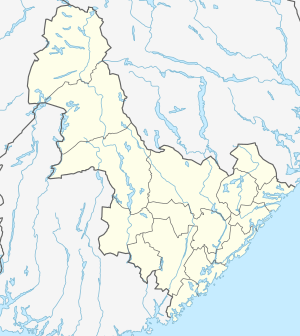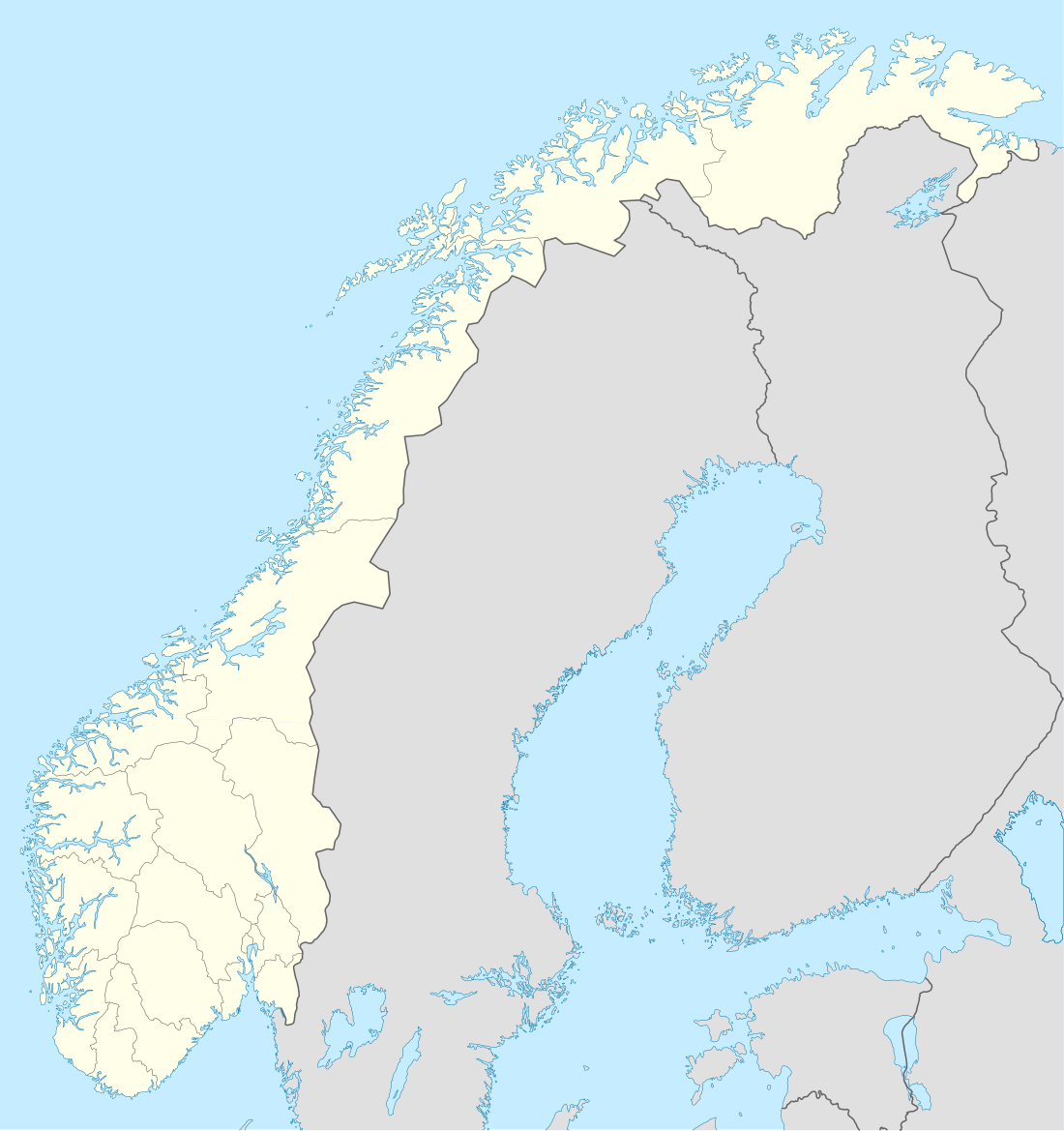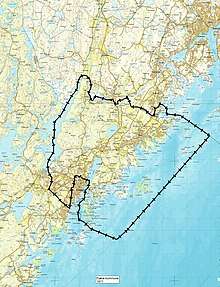Fjære
Fjære is a former municipality in Aust-Agder county, Norway. The 60.4-square-kilometre (23.3 sq mi) municipality existed from 1846 until 1971. It was located to the north of the town of Grimstad. The name is still used to refer to that area, which is now a part of Grimstad municipality. The administrative centre of Fjære was the village of Vik, just east of the historic Fjære Church. Other villages in Fjære included Fevik, Dømmesmoen, Frivold, Kroken, and Rønnes.[1]
Fjære kommune | |
|---|---|
View of Fjære Church | |
 Fjære kommune Location of the municipality  Fjære kommune Fjære kommune (Norway) | |
| Coordinates: 58°21′58″N 08°35′40″E | |
| Country | Norway |
| Region | Southern Norway |
| County | Aust-Agder |
| Municipality ID | NO-0923 |
| Adm. Center | Vik |
| Area | |
| • Total | 60.4 km2 (23.3 sq mi) |
| Time zone | UTC+01:00 (CET) |
| • Summer (DST) | UTC+02:00 (CEST) |
| Created from | Øyestad in 1846 |
| Merged into | Grimstad in 1971 |
History

The municipality of Fjære was created in 1846 when the old municipality of Øyestad was divided. Initially, Fjære had a population of 2,806. The first municipal council met at a farmhouse at Bringsvær, north of Vik. In 1886, the council began meeting in the village of Vik.[2]
On 1 January 1878, a part of Fjære located adjacent to the town of Grimstad (population: 948) was transferred from Fjære to Grimstad. Again, on 1 January 1960, another part of Fjære located next to Grimstad (population: 344) was transferred from Fjære to the town of Grimstad.
On 1 January 1971, the neighboring municipalities of Fjære (population: 6,189) and Landvik (population: 2,781) were merged with the town of Grimstad (population: 2,794) to form a much larger municipality called Grimstad.[3]
Name
The municipality (originally the parish) of Fjære was named after the old Fjære farm (Old Norse: Fjǫrðr or Fjarðar), where the first Fjære Church was built. The name is identical with the word fjǫrðr which means "fjord".[1][4]
Fjære Church
Fjære Church (Fjære kirke) is made of stone and dates back to the middle of the 12th century. Despite being 850 years old, it is an active parish church. It was not completed in one generation, but was created gradually over the centuries. The church grew together with the village and the people, and became the centre of Fjære's history from the Middle Ages until the present day. The oldest and most valuable individual cultural monuments in and around Fjære Church are the finely sculpted head of a man in stone over the south door, dating from before 1150.[5]
The church's unique and beautiful baptismal font, in the High Gothic style from the Middle Ages. Olavskilden, a fountain associated with St. Olav the Holy. The Terje Vigen stone monument in memory of the brave men of the 1807–1814 war. The stone monument was erected in 1906 by the friends of Terje Vigen. The altarpiece, pulpit with panelled ceiling and pews with the names of farms painted on them are considered valuable. They were made in the period 1500–1700. The well preserved church is located approximately 3 kilometres (1.9 mi) north of Grimstad.[6]
References
- Thorsnæs, Geir, ed. (2015-07-19). "Fjære – tidligere kommune i Aust-Agder". Store norske leksikon (in Norwegian). Kunnskapsforlaget. Retrieved 2017-11-09.
- "Grimstad rådhus" (in Norwegian). Grimstad kommune. Retrieved 2017-11-09.
- Jukvam, Dag (1999). "Historisk oversikt over endringer i kommune- og fylkesinndelingen" (PDF) (in Norwegian). Statistisk sentralbyrå.
- Rygh, Oluf (1905). Norske gaardnavne: Nedenes amt (in Norwegian) (8 ed.). Kristiania, Norge: W. C. Fabritius & sønners bogtrikkeri. p. 115.
- "Fjære kirke". kunsthistorie. Retrieved 2016-10-01.
- "Grimstad Municipality in Norway". GoNorway.com.
External links

- Fjære school (in Norwegian)